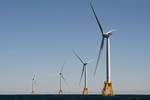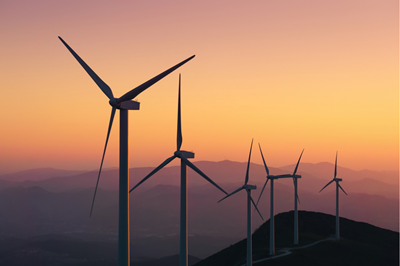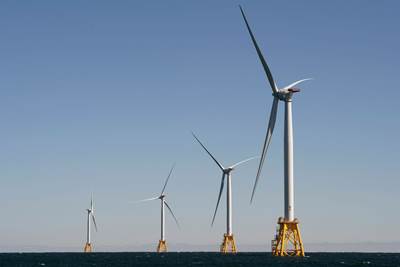E2 reports 11% clean energy job surge for second half of 2020, with three million employed
Sector recovers 300,000 jobs since pandemic-related unemployment peaked in Q2 2020, with clean vehicle and renewable energy sectors growing 26% and 13.5% respectively.
Share
Read Next

Photo Credit: Dennis Schroeder/NREL
Clean energy jobs surged nearly 11% percent in the second half of 2020 to employ more than 3 million Americans across every state and nearly every county, according to the sixth annual Clean Jobs America report from E2 (Washington, D.C., U.S.) released on April 19 during a virtual press conference with U.S. Department of Energy (DOE) Deputy Secretary David Turk. The report, released at the start of U.S. Climate Action Week in Washington, DC., comes as the Biden administration prepares to host the April 22-23 Leaders Summit on Climate, and Congress prepares to consider the administration’s American Jobs Plan infrastructure and clean energy package.
Like most of the economy, clean energy was hit hard by the COVID-19 pandemic and economic downturn in 2020. At one point more than 600,000 clean energy workers had filed for unemployment, but the sector rebounded strongly after May to recover about half of those jobs to finish the year down 307,000 clean energy workers. The decline in total clean energy employment was the first recorded since E2 began producing its annual Clean Jobs America reports in 2016.
According to the analysis, energy efficiency jobs saw the biggest drop, declining about 11% over the year as workers were prevented from entering homes and offices because of the pandemic lockdowns. Still, energy efficiency reportedly accounts for an even greater share of U.S. construction jobs, employing about one in every five construction workers nationwide. Other clean energy sectors also saw significant declines in 2020, including renewable energy (6%), grid and storage (7%), and clean fuels (7%).
Several clean energy sectors did see job gains in 2020, including wind energy which added about 2,000 jobs. But the brightest spot was in manufacturing of electric and plug-in hybrid vehicles, where about 12,200 jobs were added as an increasing number of automakers announced shifts to producing 100% zero-emission vehicles.
Despite the setbacks, clean energy jobs rebounded quicker than overall nationwide workforce, according to the analysis. Clean energy jobs grew about 11% since May, compared to less than 9% growth in the national workforce during the same period.
“Despite last year’s unprecedented decline, what the data shows is that clean energy is a job creator in every state and nearly every county in America,” says Bob Keefe, executive director the national nonpartisan business group E2. “The message to members of Congress is that if you want these good paying jobs in your backyard, you need to support the policies on the table that are primed to turbocharge clean energy and keep it growing.”
Other report findings include:
- California, Texas and New York continue to lead the U.S. in total clean energy jobs. In total, eight states were home to more than 100,000 clean energy workers.
- Clean energy occupations are a major part of many sectors of the economy. Jobs involved in clean energy projects account for 19% of all construction jobs; 5% of all wholesale trade jobs and 4% of all manufacturing jobs.
- Georgia, Kentucky, Pennsylvania and Michigan have seen the fastest clean energy job growth since unemployment peaked in May, with all four states experiencing growth of more than 20% from June to the end of the year.
- North Carolina, Michigan and Texas lead the nation in rural clean energy jobs, each with more than 20,000 clean energy jobs located outside of major metropolitan areas. In Vermont, Montana, North Dakota and Wyoming, the majority of clean energy jobs were in rural areas.
- The clean vehicles sector was the fastest-growing sector since unemployment peaked in May, increasing jobs 26% from June to December. Renewable energy and grid and storage grew 13.5% and 14.7% respectively during the same period.
According to Paula Glover, president of Alliance to Save Energy, “Many people don’t realize that the energy efficiency sector is one of the largest in the entire energy industry. This report confirms what we knew: our industry was hard-hit by COVID-19, and it provides all the more evidence that as Congress considers infrastructure and energy proposals, they must prioritize policies that get these displaced workers back on the job.
“But it can’t just be about recovery,” he continues. “We must focus on revitalization and a transition to a just energy economy. No other sector is positioned like efficiency to reduce carbon emissions and build back better: efficiency jobs are found in 99.8% of U.S. counties and more jobs were being added than any other energy sector prior to COVID-19. The policy solutions to reignite that growth are ready at hand, and it’s past time for them to be implemented.”
The analysis is based on preliminary employment data collected and analyzed by BW Research Partnership for the 2021 U.S. Energy and Employment Report (USEER, forthcoming). The USEER analyzes data from the U.S. Bureau of Labor Statistics (BLS) Quarterly Census of Employment and Wages (QCEW) to track employment across many energy production, transmission and distribution subsectors. In addition, the 2021 USEER relies on a unique supplemental survey of 35,000 business representatives across the United States.
Related Content
AMRC Training Centre introduces composites apprenticeship opportunity
With partners McLaren and Teledyne CML Composites, the Training Center will train new composites technicians in South Yorkshire to build up the future industry workforce.
Read MoreNew online training course targets prepreg basics
JEC World 2024: Composites Expert highlights how its E-Learning Composites Academy platform supports flexible industry learning with new courses developed with Stelia Aerospace North America.
Read MoreNASA names university teams for aeronautics research challenges
As part of the agency’s University Leadership Initiative, three multidisciplinary teams will address topics related to growth in AAM, while a fourth examines electricity generation for future airliners.
Read MoreFACC Academy begins training, onboarding operations
FACC’s newly launched training platform will address skilled aerospace worker shortages head on, offering more than 250 specialized training courses for its entire workforce.
Read MoreRead Next
GWEC report indicates wind industry resilience, but a need to triple installation for net zero
Despite marking 2020 as the best year in history for the global wind industry, GWEC warns that new wind power capacity needs to be installed three times faster over the next decade to achieve global climate targets.
Read MoreWhite House to jumpstart offshore wind energy projects
New leasing, funding and development goals announced to accelerate and deploy offshore wind energy at scale and strengthen the domestic supply chain.
Read MorePlant tour: Daher Shap’in TechCenter and composites production plant, Saint-Aignan-de-Grandlieu, France
Co-located R&D and production advance OOA thermosets, thermoplastics, welding, recycling and digital technologies for faster processing and certification of lighter, more sustainable composites.
Read More

























